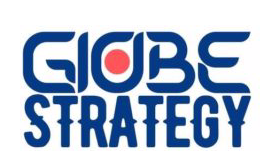This questionnaire highlights characteristics common to successful exporters
Author: globestrategy
Best global brands
Interbrand’s Best Global Brands is the definitive list of the world’s most valuable brands. Find out the world’s top 100 brands and the leadership strategies here.
What Is International Economics?
International economics is a field of study that assesses the implications of international trade, international investment, and international borrowing and lending. There are two broad subfields within the discipline: international trade and international finance.
International trade is a field in economics that applies microeconomic models to help understand the international economy. Its content includes basic supply-and-demand analysis of international markets; firm and consumer behavior; perfectly competitive, oligopolistic, and monopolistic market structures; and the effects of market distortions.
Source:
International Economics: Theory and Policy
Available on http://www.saylor.org/site/textbooks/International%20Economics%20-%20Theory%20and%20Policy.pdf
International Economics: Theory and Policy
Country statistical profile: Australia 2014
International Business
The overarching logic of the book is intuitive—organized around answers to the what, where, why, and how of international business.
Sustainability, Innovation, and Entrepreneurship
This book offers students and instructors the opportunity to analyze businesses whose products and strategies are designed to offer innovative solutions to some of the twenty-first century’s most difficult societal challenges. A new generation of profitable businesses is actively engaged in cleantech, renewable energy, and financially successful product system design and supply chain strategies that attempt to meet our economic development aspirations while addressing our social and ecological challenges. This textbook offers background educational materials for instructors and students, business cases illustrating sustainability innovation, and teaching notes that enable instructors to work effectively and accelerate student learning.
Global Business Strategy: A Systems Approach by Asterios Kefalas
Future historians of business will undoubtedly describe the 1990s as the dawn of globalization. Gradually but steadily, goods, services, money, and people are coming to be exchanged in a market that has virtually no national borders. This market is not simply an extension of the domestic markets that grew up after the end of World War II. Rather, the global market is a new phenomenon brought about by a convergence of the social, political, and economic systems of the peoples of the earth.
At the center of this globalization process is the interplay between the multinational corporation (MNC) and the nation-state, or country. The nation state, responding to the political and economic cooperation among the great powers, has found that it must adopt a more cooperative attitude toward the MNC. Similarly, the MNC, faced with some new managerial challenges, has discovered that it needs the support of the nation-state. These challenges stem from changes in technology (primarily information technology), market forces, and people’s attitudes toward work. Even among MNCs, conventional “go-it alone” strategies, prevalent in the 1970s and early 1980s, are giving way to “cooperate-to-compete” strategies. Indeed, strategic alliances among some of the largest MNCs seem to be the norm rather than the exception.
Institutions of higher education, cognizant of this shift toward globalization, are developing curricula that aim at preventing American students, the business leaders of the future, from falling prey to “the backyard view.” When one sees no light in any of the other windows in the neighborhood, it is all too easy to assume that everyone in the world is asleep-to forget that there is more to the world than one’s own backyard. The business leader of the future must understand that from now on, business opportunities and challenges will be global ones; no single country will ever again have a monopoly on business or technological expertise.
Introducing Marketing by John Burnett
Through good economic times and bad, marketing remains the pivotal function in any business. Determining and satisfying the needs of customers through products that have value and accessibility and whose features are clearly communicated is the general purpose of any business. It is also a fundamental definition of marketing. This text introduces students to the marketing strategies and tools that practitioners use to market their products
Human Resource Management
Competing books are focused on the academic part of HRM, which is necessary in a university or college setting. However, the goal with this book is not only to provide the necessary academic background information but also to present the material with a practitioner’s focus on both large and small businesses. While the writing style is clear and focused, we don’t feel jargon and ten-dollar words are necessary to making a good textbook. Clear and concise language makes the book interesting and understandable (not to mention more fun to read) to the future HRM professional and manager alike.
It is highly likely that anyone in business will have to take on an HRM role at some point in their careers.
